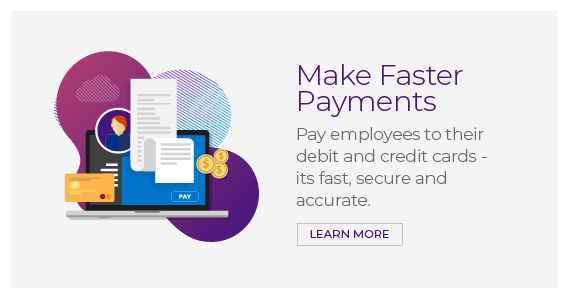Over the last few years, you’ve probably heard a lot about blockchain, and how it’s a revolutionary technology that has countless different uses. Indeed, its potential is such that Gartner predicts blockchain will create as much as $3.1trillion in business value by 2030. But how much have you heard about blockchain in the context of payroll and HR?
From that perspective, blockchain represents less of a new technology and more of a new mindset: in particular, how it can transform how payroll and HR data is stored and accessed, and how it can be leveraged in conjunction with other technologies.
Many early adopters are already using blockchain-inspired approaches in certain areas of HR, and they are fuelling the initial stages of what is expected to be exponential growth in blockchain within the sector. In this blog, we’ll explore three particular areas where blockchain can be applied to make payroll and HR easier, more efficient, and more effective when pursued globally.

Automated payments through smart contracts
By introducing smart contracts to existing payroll and HR functions, a high degree of automation can strip out much of the administrative burden and room for human error. These smart contracts, which sit within a blockchain, can be deployed to automatically and instantly pay someone for the work they have done, once certain parameters have been fulfilled.
For example, these can be used to pay contractors or freelancers who have been booked for a set amount of work or hours. As soon as that has been fulfilled, the smart contract swings into action and processes the requisite payment, without any intervention from the payroll team.
This can deliver huge efficiencies and cost reductions to payroll teams, who no longer have to process individual payments manually. It allows workers in the gig economy to get paid for their work instantly, and it’s also a huge enabler of on-demand pay, where employees withdraw accrued earnings through a self-service platform whenever they want.
Easing the joiner, mover and leaver processes
As we discussed in a recent blog, data custody is an essential consideration for businesses’ payroll and HR teams right now. Employees expect to have control of their data, including deciding who can access and use it.
Ceding control sounds like it might put employers in a bind. But by creating one immutable record of employee data in the blockchain which permitted parties can then access, it actually makes life easier for payroll and HR staff in keeping data secure, accurate, up-to-date and consistent.
One of the areas where this has the greatest effect is when new hires join an organization, existing employees move to a new role internally, or employees leave the business. For example, new hires can grant their new employer access to their personal data to speed up the onboarding and screening processes, without any need for the employer to commit time and resources to data entry or storage. When an employee leaves an organization, the data access is simply removed, and the employer doesn’t have to do anything to update their own records.
International and alternative payments
Blockchain can be used to break down many of the barriers that can make global payroll and international payments difficult or time-consuming.
For example, payments that are cross-border, including those that involve currency exchanges, can be made much quicker through blockchain compared to the BACS or wire transfer methods currently in common use. Payments can be verified through the distributed ledger in real-time, cutting out the middlemen such as banks and clearinghouses, and allowing exchange rates to be applied in real-time so that payments are always made with the highest accuracy.
Blockchain also opens up the possibility to explore alternative methods of paying employees. At an initial level, this could include digital wallets for employees, into which they can be paid instantly, and potentially then spend this money in much the same way as they would using Apple Pay or Google Pay.
But taken a step further, there is no reason why businesses couldn’t explore cryptocurrencies as an alternative, borderless and much more flexible payment method. Of course, a stablecoin free of major fluctuations would have to be used: the volatility of cryptocurrencies like Bitcoin would generate practical difficulties, and ensuring tax and social security payments are still made correctly would be extremely complex. But it would deliver flexibility in how employers make payments to a global workforce, and give employees flexibility in how they access and use their earnings.
In summary
Once you take a closer look at what blockchain has to offer from a payroll and HR perspective, it becomes clear that it’s full of potential to transform the sector. In an increasingly globalized business landscape, any efficiencies in cost, time or human resource can have a significant positive impact, as well as supporting the better experiences that employees are looking for. Now is the time to start exploring these opportunities and making payroll and HR work better for employees and employers alike.
CloudPay’s global payroll solution can help you make the most of blockchain-hosted employee data, and take your employee experiences to the next level. Explore how it maximizes the potential of that data here.




